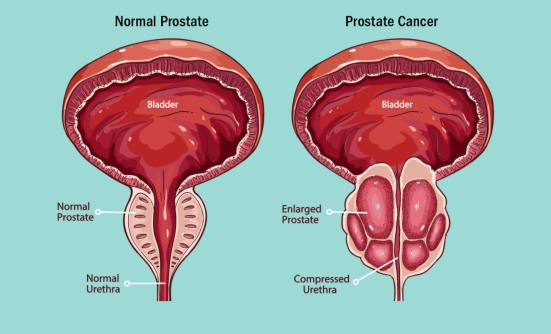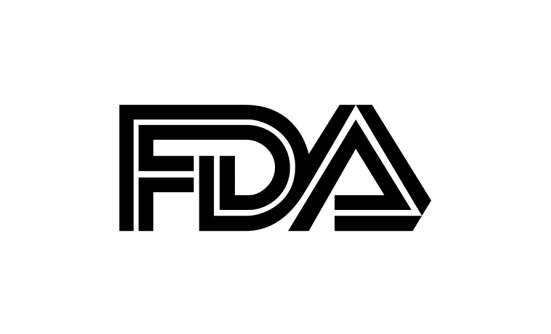Lung cancer is divided into 2 main groups. The majority of patients with lung cancer cases have non–small-cell lung cancer, or NSCLC, and about 15% of the cases have small-cell lung cancer. Knowing the type of lung cancer is important because each tumor type responds to drugs that are specific to that type but not to other drugs. In addition, NSCLC is associated with many gene abnormalities and other biomarkers that also affect the tumor’s ability to respond to specific drugs. Therefore, having a genetic test is especially important for patients with NSCLC, to know if their cancer is associated with a genetic mutation, such as EGFR, ALK, or ROS1 mutation, or with a biomarker, such as high expression of PD-1 or PD-L1 (a protein found on cancer cells).
The new drugs approved for patients with NSCLC are targeting one of those gene mutations or other biomarkers that encourage the growth of cancer cells. These drugs are able to block the activity of those biomarkers and extend survival for patients with even advanced or metastatic (spreading) lung cancer. Although lung cancer is still the number one cause of cancer-related death in the United States, the overall death rate for lung cancer has been decreasing in recent years.
At the October 2020 conference of the European Society for Medical Oncology (ESMO), researchers presented information on new or recently approved targeted therapies and immunotherapies for lung cancer that target specific mutations or the PD-L1 biomarker. These drugs provide new hope for patients with these types of lung cancer through new treatment options that significantly increase survival. The findings from the following 3 clinical trials were presented at the ESMO meeting.
First-Line Treatment with Lorbrena Improves Outcomes in Patients with Lung Cancer and ALK Mutation
In patients with advanced non–small-cell lung cancer (NSCLC) and ALK mutation, the targeted therapy Lorbrena (lorlatinib) significantly extended the time without disease progression and improved the response of cancer cells in the brain (intracranial) compared with Xalkori (crizotinib), which was the former standard-of-care first-line treatment for patients with advanced NSCLC and ALK mutation. Benjamin Solomon, MBBS, PhD, FRACP, Medical Oncologist, Lung Service, Peter MacCallum Cancer Centre in Melbourne, Australia, presented these results from the CROWN clinical trial at the 2020 ESMO conference.
“Lorlatinib [Lorbrena] resulted in a significantly longer progression-free survival, significantly higher overall and intracranial response rates, and improved global quality of life compared with crizotinib [Xalkori] as first-line treatment for ALK-positive NSCLC,” Dr. Solomon said. “These results support the use of lorlatinib as an effective first-line therapy for patients with advanced ALK-positive NSCLC,” he added.

“These are amazing data sets with absolutely astonishing results,” agreed ESMO President Solange Peters, MD, PhD, Medical Oncologist at Lausanne University in Switzerland, who commented on the study.
About 3% to 7% of patients with NSCLC have ALK mutations or rearrangements. Xalkori was the first ALK inhibitor to receive FDA approval (in 2011) for the treatment of patients with NSCLC and ALK mutation and, until now, was the standard therapy for such patients.
Lorbrena is a new, third-generation ALK inhibitor that was approved by the FDA in November 2018 as a second- or third-line treatment for patients with NSCLC and ALK mutations. The new results presented at ESMO suggest that it should soon be available as a first-line treatment. This drug was especially designed to treat lung cancer that has spread to the brain, which is a common problem in patients with advanced lung cancer; this gives Lorbrena an advantage over Xalkori in terms of the response to cancer spreading to the brain.
“Lorlatinib has the ability to delay progression of existing brain metastases, and also to prevent the development of new brain metastasis in patients with ALK-positive NSCLC,” Dr. Solomon explained. Among patients with measurable brain metastasis, the tumor response in the brain was 82% with Lorbrena and 23% with Xalkori.
The CROWN study included 296 patients who were divided into 2 groups to receive once-daily treatment with Lorbrena or twice-daily treatment with Xalkori.
After about 18 months of therapy, the average time without disease progression was not reached, meaning that many patients are still responding to the treatment with Lorbrena. By contrast, the average time without disease progression was only 9.3 months for patients receiving Xalkori. Indeed, after 12 months, the majority (78%) of patients in the Lorbrena group continued to respond to treatment compared with only 39% of the patients in the Xalkori group.
In addition, 4 patients who received Lorbrena had a complete response (no sign of cancer) to treatment, but no patients who received Xalkori had a complete response to treatment. The average time from the start of treatment until patients had a response to therapy was 1.8 months in both groups.
Side Effects
The safety of Lorbrena and Xalkori were similar in this study. Almost all patients in both groups had a side effect. Severe (grades 3 and 4) side effects were reported in 72% of patients who received Lorbrena and in 56% of those who received Xalkori. Serious side effects occurred in 34% of patients who received Lorbrena and in 27% of patients who received Xalkori.
Fatal (resulting in death) side effects occurred in 7 patients in each treatment group, and the side effects that resulted in treatment discontinuation were similar.
Dr. Solomon said that although grade 3 and 4 side effects were more common with Lorbrena, the majority of them did not have symptoms and were easy to treat.
The side effects that were more common with Lorbrena were elevated cholesterol and triglyceride levels, edema, weight gain, peripheral neuropathy, and cognitive problems. By contrast, diarrhea, fatigue, vision disorders, liver problems, and nausea or vomiting were more common with Xalkori.
In addition, patients who received Lorbrena maintained their quality of life throughout the treatment, whereas the quality of life got worse for patients who received Xalkori.
Libtayo Prolongs Survival in Patients with Advanced Lung Cancer and High PD-L1 Expression
First-line treatment with the PD-L1 inhibitor Libtayo (cemiplimab) significantly prolonged survival and the time without disease progression compared with standard-of-care chemotherapy in patients with advanced non–small-cell lung cancer (NSCLC) and high PD-L1 expression (on at least 50% of tumor cells). Ahmet Sezer, MD, Department of Medical Oncology at Başkent University in Turkey reported the findings from the second analysis of the phase 3 clinical trial EMPOWER-Lung at the 2020 ESMO conference.
“Our data provide the rationale for cemiplimab [Libtayo] as a new first-line monotherapy option for patients with advanced NSCLC and PD-L1 expression of 50% or more,” stated Dr. Sezer, who was the lead investigator of this study.
Based on these results, on October 29, 2020, the FDA granted Libtayo a priority review to consider if it should be approved as first-line treatment for patients with NSCLC and PD-L1 expression of 50% or more.

“This is a trial done late in the game with an approved drug, and it included a more real-world population than other trials of PD-1/PD-L1 inhibitors…and even more significantly, patients were allowed to have stable brain metastasis. This is what we see in the real world,” said Roy S. Herbst, MD, PhD, Chief, Medical Oncology, Yale Cancer Center in New Haven, Connecticut, who was invited to comment on the results.
Libtayo is a potent PD-1 inhibitor that is currently approved by the FDA for the treatment of patients with advanced skin cancer (cutaneous squamous-cell carcinoma). Previous results in patients with NSCLC or other solid tumors suggest that Libtayo is similar in its benefits and safety to other PD-1 inhibitors that are already approved by the FDA for the treatment of patients with NSCLC.
The 710 patients enrolled in this study did not receive previous therapy and all had advanced NSCLC and PD-L1 expression of 50% or more but no targetable mutations, such as EGFR, ALK, or ROS1 mutations. The patients were divided equally between those who received Libtayo and those who received chemotherapy and continued treatment for up to 2 years.
The results showed that Libtayo was superior to chemotherapy overall. After 12 months of treatment, the overall survival rate was 72.4% among patients who received Libtayo compared with 53.9% in those who received chemotherapy. By 2 years, the survival rates were 50.4% with Libtayo versus 27.2% with chemotherapy.
The survival benefit with Libtayo compared with chemotherapy was evident across all subgroups, except for patients from Asian countries. Patients with a higher PD-L1 expression had better response to Libtayo but not to chemotherapy, Dr. Sezer explained.
In addition, the health-related quality of life was maintained among patients who received Libtayo, but deteriorated in patients who received chemotherapy.
“The quality of life data are impressive [with Libtayo]. This becomes even more important as you treat patients for longer periods of time,” Dr. Herbst emphasized.
Side Effects
Grade 3 or higher treatment-related side effects were reported in 37.2% of the patients who received Libtayo and 48.5% of those who received chemotherapy.
“The safety profile of cemiplimab was consistent with the previously reported profile for cemiplimab and other PD-1/PD-L1 inhibitors in NSCLC and other tumor types,” Dr. Sezer stated.
“Despite substantially longer exposure to cemiplimab, the safety profile of cemiplimab appears to be better than chemotherapy,” he added.
Sotorasib First Targeted Therapy for Lung Cancer with KRAS Mutation

Sotorasib, an investigational oral drug and the first KRAS inhibitor that targets the KRAS p.G12C mutation, demonstrated promising results in patients with NSCLC and this specific KRAS mutation, in a phase 1 clinical trial. The findings were presented at the 2020 ESMO conference by lead investigator David S. Hong, MD, Deputy Chair, Department of Investigational Cancer Therapeutics, M.D. Anderson Cancer Center, Houston, Texas, and were recently published in the New England Journal of Medicine.
These results have garnered much attention among experts because the development of a drug to target KRAS mutations has been elusive since this mutation was first identified 4 decades ago. Overall, 13% of patients with non–small-cell lung cancer (NSCLC) have KRAS mutations, and are the among the most difficult to treat.
“The KRAS G12C inhibitor sotorasib has the potential to address the unmet need for the treatment of tumors harboring the KRAS p.G12C mutation. Results of this phase 1 study showed that the novel first-in-class drug sotorasib produced durable disease control in heavily pretreated patients with NSCLC, and clinical activity was observed across a range of different biomarkers. We saw clinical benefit with mainly low-grade gastrointestinal and hepatic toxic effects in a heavily pretreated population,” Dr. Hong said.
“Sotorasib is a triumph of academic drug discovery,” agreed Colin Lindsay, BSc, MBChB, MRCP, PhD, Consultant in Medical Oncology, the Christie NHS Foundation Trust, Manchester, United Kingdom, who was invited to comment on the results.
“We know that over many years, more than 3 decades, KRAS has been very difficult to target. The efficacy of sotorasib is confined to the KRAS p.G12C mutation. We know this drug will not be toxic. It is safe with no dose-limiting toxicity and manageable toxicity. The efficacy for smoking-related lung cancer continues to be impressive at follow-up of roughly 1 year. It is striking that the effects are dose-independent,” Dr. Lindsay emphasized.
This phase 1 clinical trial included 129 patients with locally advanced or metastatic solid tumors harboring the KRAS p.G12C mutation. Of these patients, 59 had NSCLC, 42 had colorectal cancer, and 28 had other solid tumors. “These cancers had been refractory [resistant] to previous treatments,” Dr. Hong noted.
The study met its primary goal of showing that the drug was safe, with no fatal side effects.
At an average of 11.7 months, the best response to sotorasib was observed in patients with NSCLC, including 32.2% of patients who had a confirmed objective response; among those who received the highest dose of the drug, 35.3% had a confirmed response.
“In the NSCLC subgroup, the fact that 32.2% of the patients across all dose levels and 35.3% at the target dose of 960 mg had a response was particularly promising,” said Dr. Hong.
Other studies are underway to evaluate sotorasib as monotherapy or as part of combination therapy in patients with NSCLC and other solid tumors.














